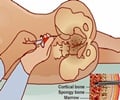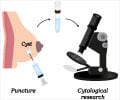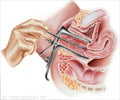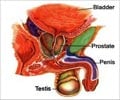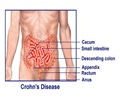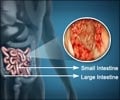Description of Small Intestine
The small intestine is approximately 21 feet long and consists of three sections - the Duodenum, Jejunum and the ileum, most of the digestion and absorption of food occurs in small intestine.
Definition
Small intestine biopsy is a diagnostic procedure in which a portion of the small.
Intestinal lining is removed for examination. A flexible fiber-optic tube (endoscope) is inserted through your mouth or nose and into the upper gastrointestinal tract from which a tissue sample is removed.
What is the purpose of Small Intestine Biopsy?
The small-bowel biopsy is used to diagnose and confirm disease of the lining of the small intestine.
Evaluation of patients with malabsorption, iron deficiency (anaemia), coeliac disease, neoplasia.
Patients with diarrohea suspected due to infection, to confirm ulceration induced due to NSAIDs, bleeding from an unknown site.
How is small intestine biopsy obtained?
Small intestine biopsy samples can be obtained by:
EGD(Esophago-gastro-duodeno-scopy) In this procedure, a flexible fiber-optic tube (endoscope) is inserted through your mouth or nose into the upper gastrointestinal tract.
Capsule biopsy method produces a large sample of the intestinal lining (mucosa) and allows sampling of areas that are beyond the reach of the endoscope. The procedure is similar to that of EGD.
The back of your throat is sprayed with a local anesthesia, the tube and capsule is inserted through your mouth.
The position may be changed from sitting to lying on the right side to help the capsule advance through the stomach and into the small bowel.
The position of the tube entering the small intestine is checked by fluoroscopy which confirms that the capsule has passed the pylorus, small samples of small intestine tissue are obtained by the endoscopes cutting edge, after which the instrument and tube are withdrawn.
How does the patient feel the test?
The passage of the tube and capsule often makes a person feel like gagging (Topical anesthetic is used to minimize this sensation).
A mild sedative can be given, but only in small doses because the person must remain alert to assist with the biopsy procedure (swallowing and turning). The biopsy sampling causes little or no pain.
What are the Precautions and Care to be taken before and after the Biopsy procedure?
Due to the slight risk of bleeding during or after this procedure, Aspirin, NSAIDs (non-steroidal anti-inflammatory drugs), anticoagulants and antiplatelet drugs should not be taken for at least five days before the test.
What is the care to be taken after the biopsy procedure?
The patient should not eat or drink until the topical anesthetic wears off (usually about one to two hours). If intravenous sedatives were administered during the procedure, the patient should not drive for the day.
Complications from this procedure are uncommon, but can occur. The patient should report to the doctor immediately, if he has abdominal pain or bleeding.
What are the Risks of Small Intestine Biopsy?
Complications from this procedure are rare, but can include:
- Bleeding (hemorrhage).
- Bacterial infection with fever and pain
- Bowel puncture (perforation).
The patient should immediately report any abdominal pain or bleeding to the physician in charge.


